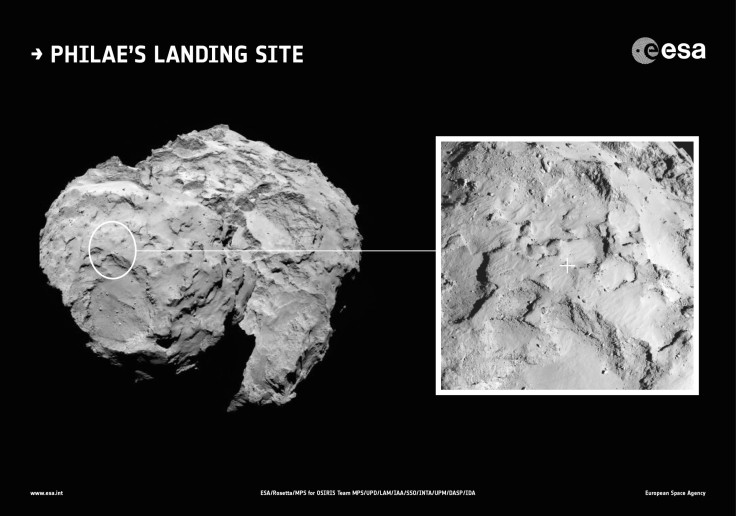ESA’s Rosetta To Deploy Its Lander ‘Philae’ To Comet’s Surface On November 12

The Rosetta mission, led by the European Space Agency, or ESA, will deploy its lander, called “Philae,” to the surface of its target comet “67P/Churyumov–Gerasimenko” on Nov. 12, the space agency announced Friday. Philae’s landing site, which was selected six weeks after Rosetta arrived at the comet on Aug. 6, is currently known as “Site J.”
Since the Rosetta spacecraft reached the comet following a 10-year-long journey though the solar system, it has been conducting scientific analysis of the comet, which is a leftover from early in the solar system’s 4.6-billion-year history, ESA said, adding that the mission’s primary focus has been to survey 67P/Churyumov–Gerasimenko while preparing for the maiden attempt to land on a comet.
“Site J was chosen unanimously as the primary landing site because the majority of terrain within an area that size has slopes of less than 30 degrees relative to the local vertical and because there are relatively few large boulders,” an ESA statement said. “The area also receives sufficient daily illumination to recharge Philae and continue surface science operations beyond the initial 64-hour battery-powered phase.”
According to ESA, its scientists have been analyzing the flight trajectories and timings for Rosetta to deploy its lander at the earliest possible opportunity. While two suitable landing sites have been identified -- one as the primary site and the other as a backup -- both landings are scheduled on the same day.
For the primary landing on Site J, Rosetta will release Philae at 8:35 a.m. UTC or 4:35 a.m. EDT at a distance of 14 miles from the center of the comet, while the landing will take place about seven hours later.
However, if the scientists decide to land on the backup site, Philae will be separated from Rosetta at 1:04 p.m. UTC or 9:04 a.m. EDT at a distance of 7.8 miles from the center of the comet, with the landing taking place about four hours later.
“Final confirmation of the primary landing site and its landing scenario will be made on October 14 after a formal Lander Operations Readiness Review, which will include the results of additional high-resolution analysis of the landing sites conducted in the meantime,” ESA said in the statement.
The Philae landing will be followed by Rosetta’s examination of the comet and its environment using 11 science instruments for another year. During this time, the spacecraft and the comet will orbit the sun together.
According to NASA, the Rosetta is expected to provide key information about the gas, dust and structure of the nucleus and organic materials associated with the comet. The findings could help scientists better understand the history and evolution of the solar system as well as the origin of Earth’s water and even life.
© Copyright IBTimes 2024. All rights reserved.





















